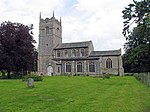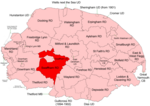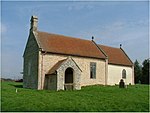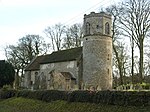RAF Bodney
Airfields of the VIII Fighter Command in the United KingdomHilboroughPortal templates with redlinked portalsRoyal Air Force stations in NorfolkRoyal Air Force stations of World War II in the United Kingdom ... and 1 more
Use British English from May 2013

Royal Air Force Bodney or more simply RAF Bodney is a former Royal Air Force Station located 4.5 miles (7.2 km) west of Watton, Norfolk, England. Originally built as an RAF Bomber Command airfield during 1939-1940, Bodney was transferred to the United States Army Air Forces in the summer of 1943. Placed under the jurisdiction of VIII Fighter Command of Eighth Air Force, it was primarily the home of the 352d Fighter Group, the "Blue Nosed Bastards of Bodney". The unit briefly moved to Belgium in January 1945 due to the Battle of the Bulge, although it returned in April. It was closed after the 352d returned to the United States in November.
Excerpt from the Wikipedia article RAF Bodney (License: CC BY-SA 3.0, Authors, Images).RAF Bodney
Hüttenhof, Bad Salzungen
Geographical coordinates (GPS) Address Nearby Places Show on map
Geographical coordinates (GPS)
| Latitude | Longitude |
|---|---|
| N 52.562222222222 ° | E 0.71333333333333 ° |
Address
Hüttenhof 2
36469 Bad Salzungen (Tiefenort)
Thüringen, Deutschland
Open on Google Maps











